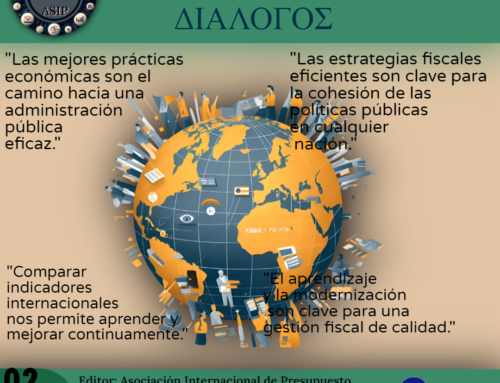YEAR N° 111 March/April 2023
Articles:
Crypto Assets and CBDCs in Latin America and the Caribbean: Opportunities and Risks
M.Appendino, O. Bespalova, R. Bhattacharya, JF. Clevy, N. Geng, T. Komatsuzaki, J. Lesniak, W. Lian, S. Marcelino, M. Villafuerte and Y. Yakhshilikov
Fiscal Rules: Challenges and Reform Opportunities for Emerging Markets
Martín Ardanaz, Eduardo Cavallo and Alejandro Izquierdo
Enhancing the Public Procurement Suppliers Registry in Colombia
OECD Public Governance Policy Papers N° 22
EDITORIAL NOTE
The topics addressed by the working papers that has been included in this issue of the International Journal of Public Budget have acquired great importance today due to the circumstances affecting the public sector in most countries of the world. Armed conflicts and pandemics that have produced health emergencies have combined and their effects require greater efforts on the part of those responsible for the administration of public resources. Beyond the debates that these works may generate, undoubtedly their contribution will be adequately estimated by specialists and technicians who face new demands or problems with scarce resources.
The article titled Crypto Assets and CBDCs in Latin America and the Caribbean: Opportunities and Risks has been prepared by M. Appendino, O. Bespalova, R. Bhattacharya, JF. Clevy, N. Geng, T. Komatsuzaki, J. Lesniak, W. Lian, S. Marcelino, M. Villafuerte and Y. Yakhshilikov. The authors provid a general overview of the nature, pros, and cons of crypto assets and CBDCs, focusing on documenting their recent experience in LAC. The region records a high interest in unbacked crypto assets and stablecoins and its authorities’ policy responses have varied substantially, ranging from the introduction of Bitcoin as legal tender in El Salvador to their prohibition in many other countries worried about their impact on financial stability, currency/asset substitution, tax evasion, corruption, and money laundering. This paper also describes briefly the results of a survey on CBDCs’ introduction plans and crypto assets regulation. Finally, this paper presents some general lessons and policy recommendations for the region on the regulation of cypto assets, digital currencies and cross-border payments, and on the potential introduction of CBDCs.
The paper written by Martín Ardanaz, Eduardo Cavallo y Alejandro Izquierdo, titled Fiscal Rules: Challenges and Reform Opportunities for Emerging Markets, deals with fiscal rules as tools to strengthen debt sustainability by constraining policy discretion. However, their track record in the case of emerging markets is mixed, as setting up a fiscal rule has been no guarantee of debt stabilization. International experience and empirical evidence regarding the working of fiscal rules suggest that paying attention to the quality of rule design, the mechanisms behind better compliance, forward guidance on return to the rule, and the impacts on different dimensions of public finances (particularly spending composition) is key to enhancing fiscal rule performance. In addition, fiscal rules should be complemented with credible medium-term fiscal frameworks and independent fiscal councils that together set relevant policy anchors to support effectively the goal of safeguarding fiscal sustainability.
Enhancing the Public Procurement Suppliers Registry in Colombia is an OECD Public Governance Policy Paper that deals with public procurement, which accounted for 11.4 % of GDP in 2019, slightly below the OECD average of 12.6%. In response to the Covid-19 crisis, the government of Colombia developed the Policy for Reactivation and Sustainable Growth, which identifies public procurement as a strategic lever for sustainable and inclusive growth in the recovery phase, highlighting the need to enhance the access of companies, especially micro, small and medium sized enterprises (MSMEs), to the public procurement market. A supplier registry is a useful tool for the public sector to collect, store, and disseminate data of suppliers and/or potential suppliers – allowing public entities to identify and/or select reliable suppliers. Despite its potential benefits, some elements of the supplier registry, if not designed properly, may act as barriers to accessing public procurement opportunities, which may – in turn – affect the public procurement system’s efficiency. These include: (1) mandatory or voluntary registration; (2) fees; and (3) administrative procedures, such as the types of required documents, digitalization, and automation. These elements should, therefore, be carefully analyzed during supplier registry establishment and reform. Participation in public procurement processes in the country requires registration in two systems: i) the Single Suppliers Registry (Registro Único de Proponentes: RUP), a registry of qualified potential suppliers for public procurement processes which is managed by Chambers of Commerce, and ii) the e-procurement platform SECOP (Sistema Electrónico para la Contratación Pública) administered by Colombia Compra Eficiente (CCE), the public procurement authority and national central purchasing body. Established in 1993 and in accordance with the law, the RUP is managed by the 57 Chambers of Commerce across the country. Economic operators need to provide relevant information and documents related to their i) legal capacity, ii) financial/organizational capacity and iii) experience. This report provides Colombia with key recommendations and policy options to enhance the RUP’s performance and further drive the participation of companies of all sizes, particularly MSMEs. These recommendations are expected to serve as a key input for the upcoming National Development Plan (2022–2026) through stakeholder engagement process with key actors including Chambers of Commerce and CCE (Colombia Compra Eficiente).
With these working papers on relevant issues of great importance for the management of public finances, the International Public Budget Association makes a significant contribution to the debate regarding the efficiency and optimization of the use of fiscal resources.



